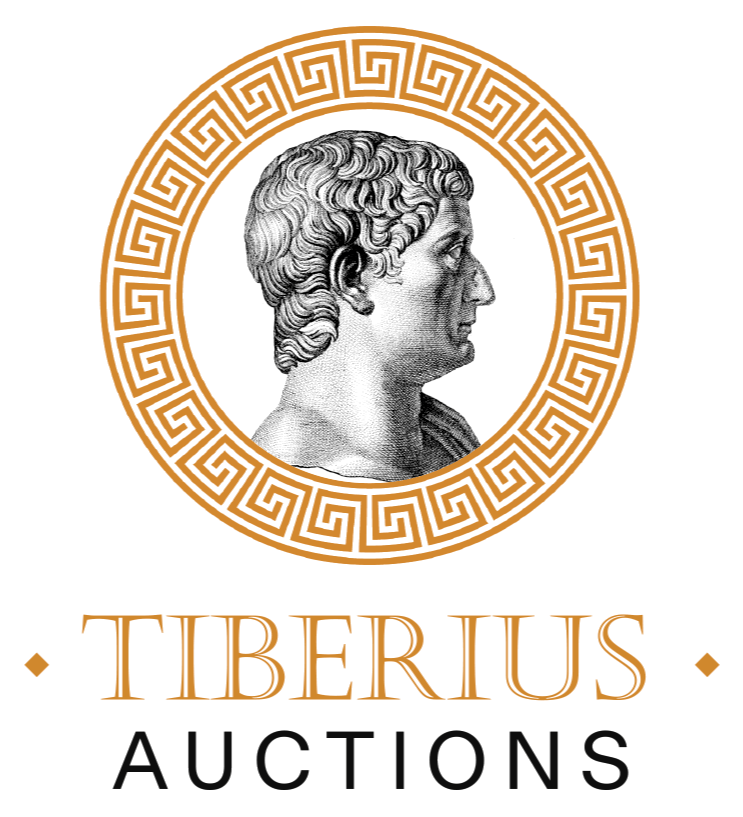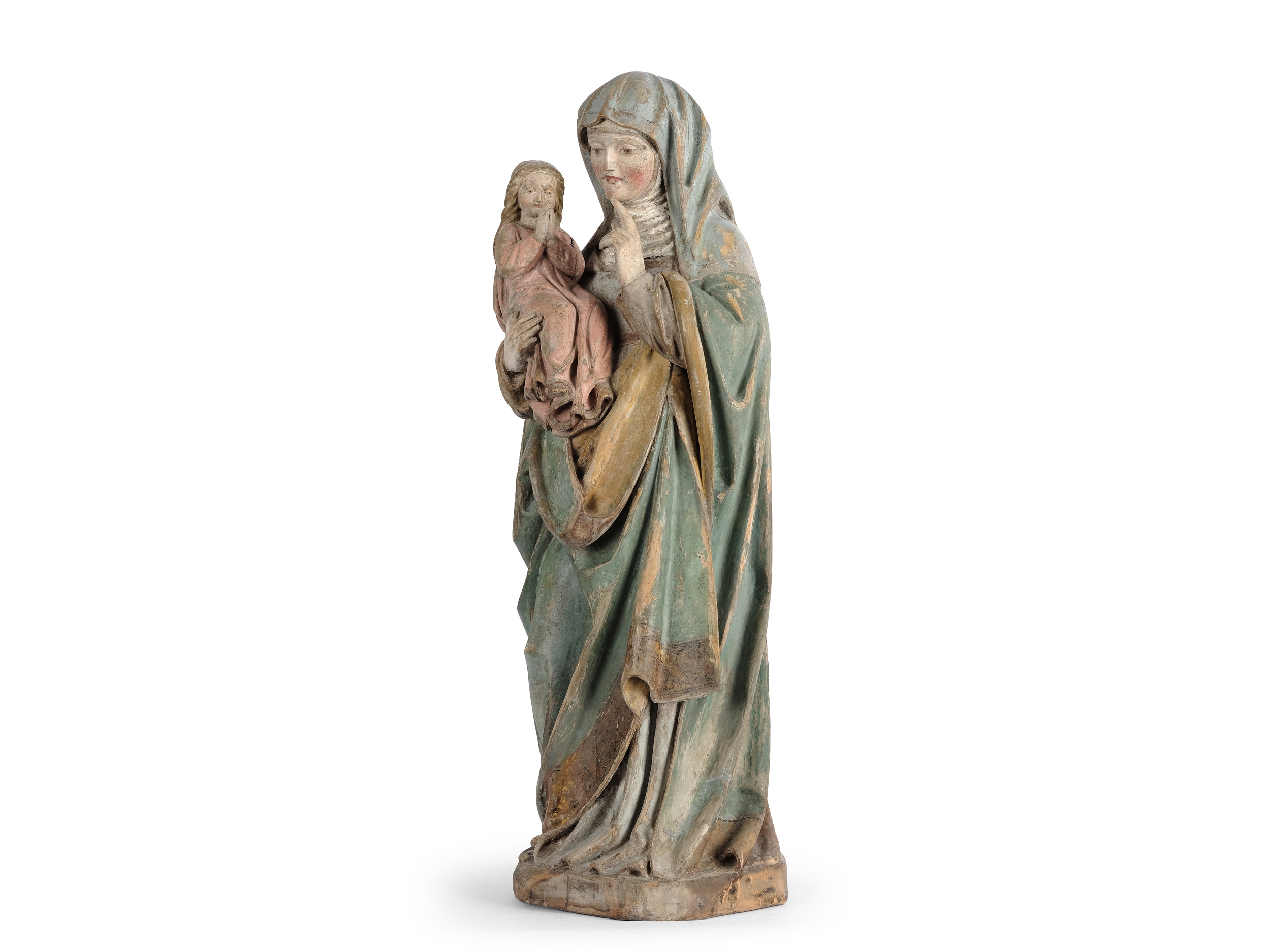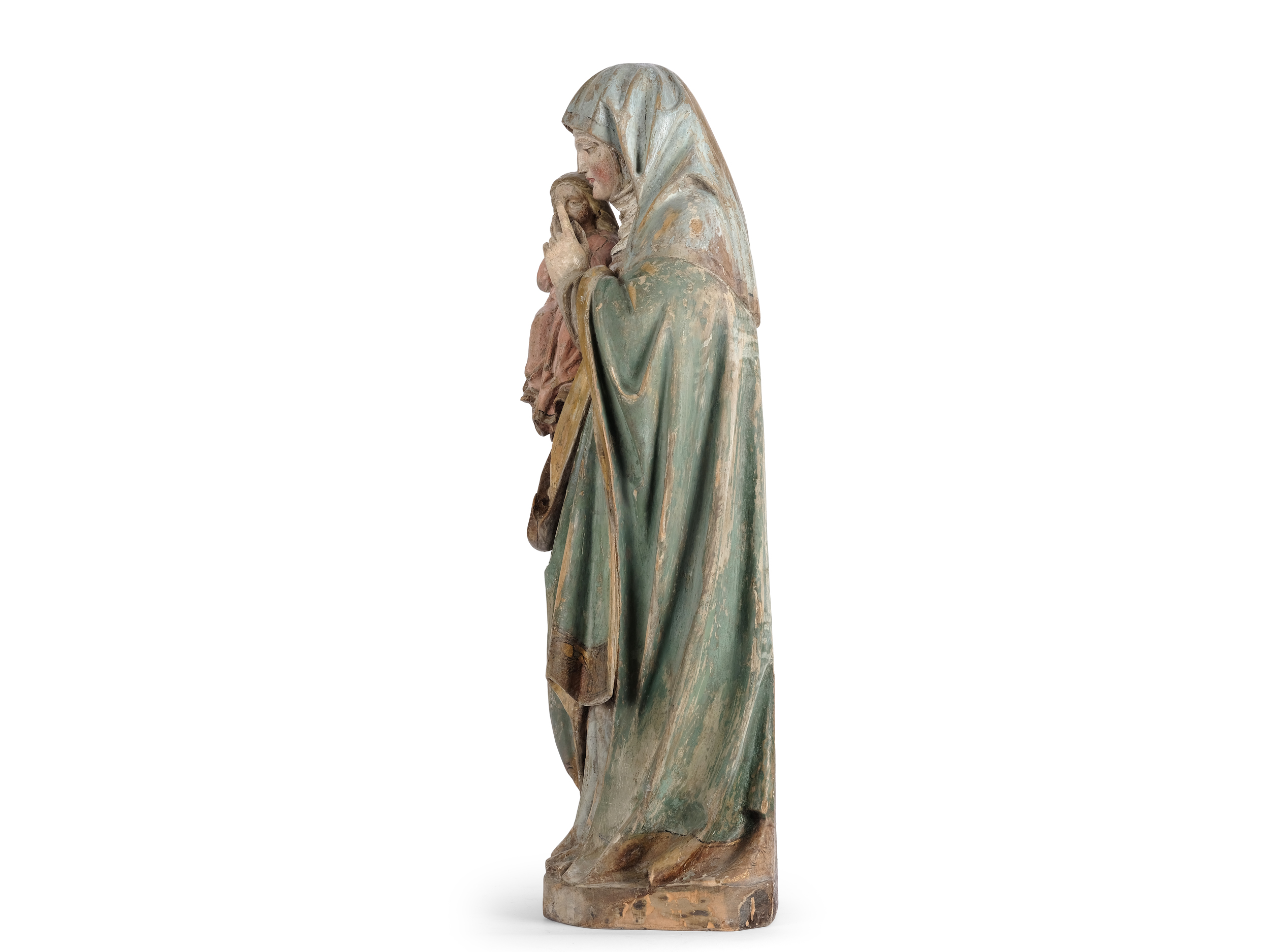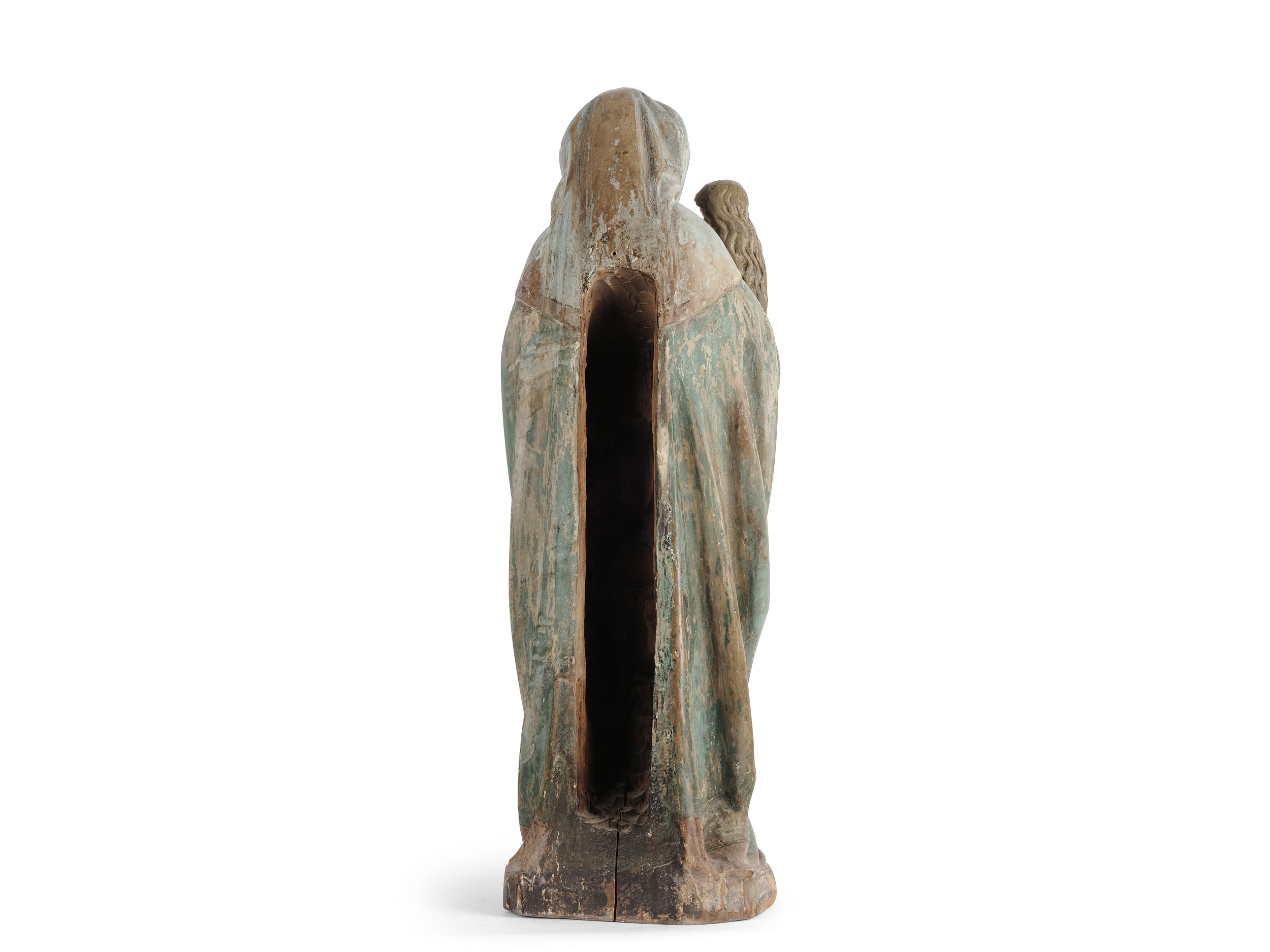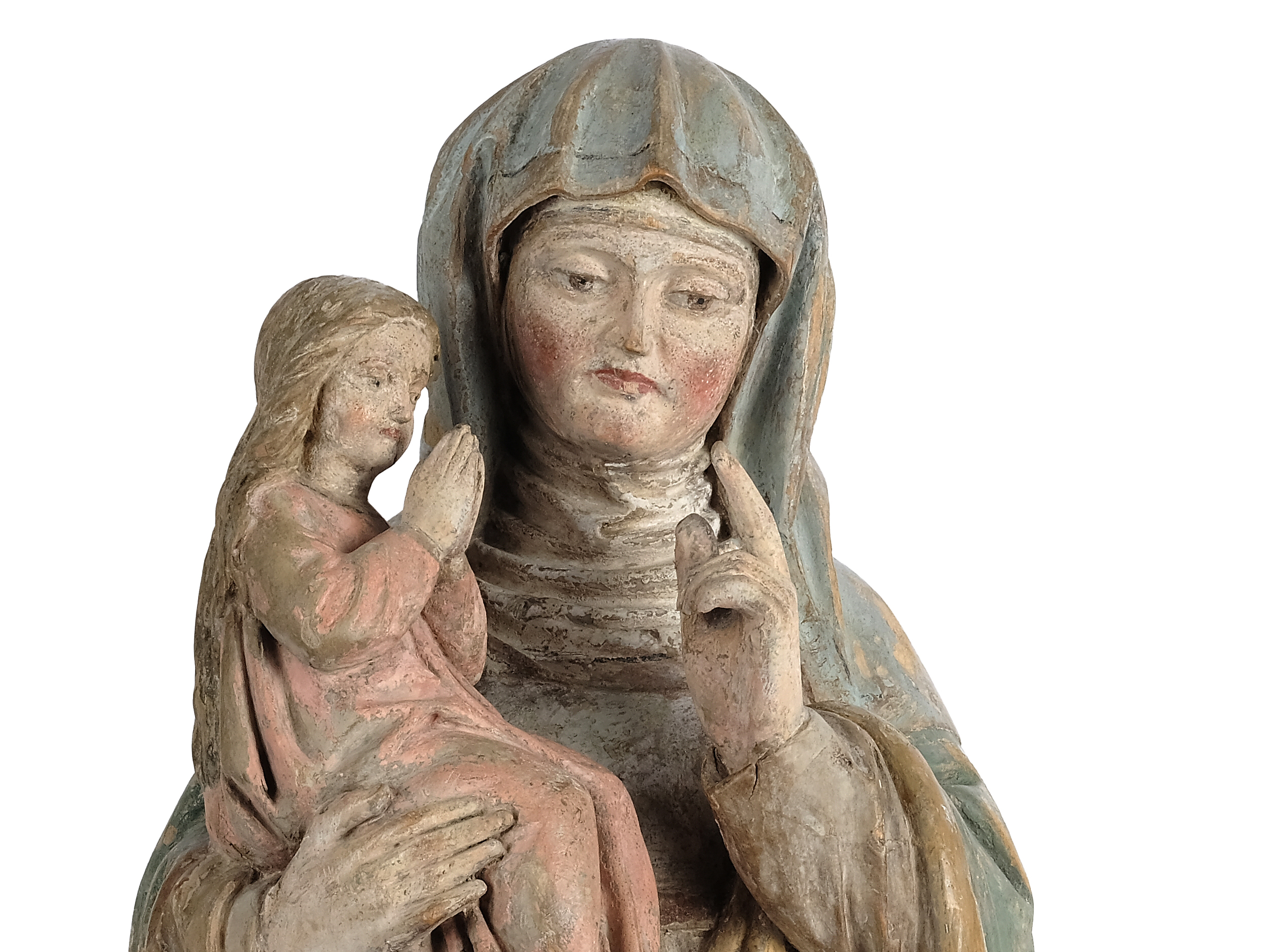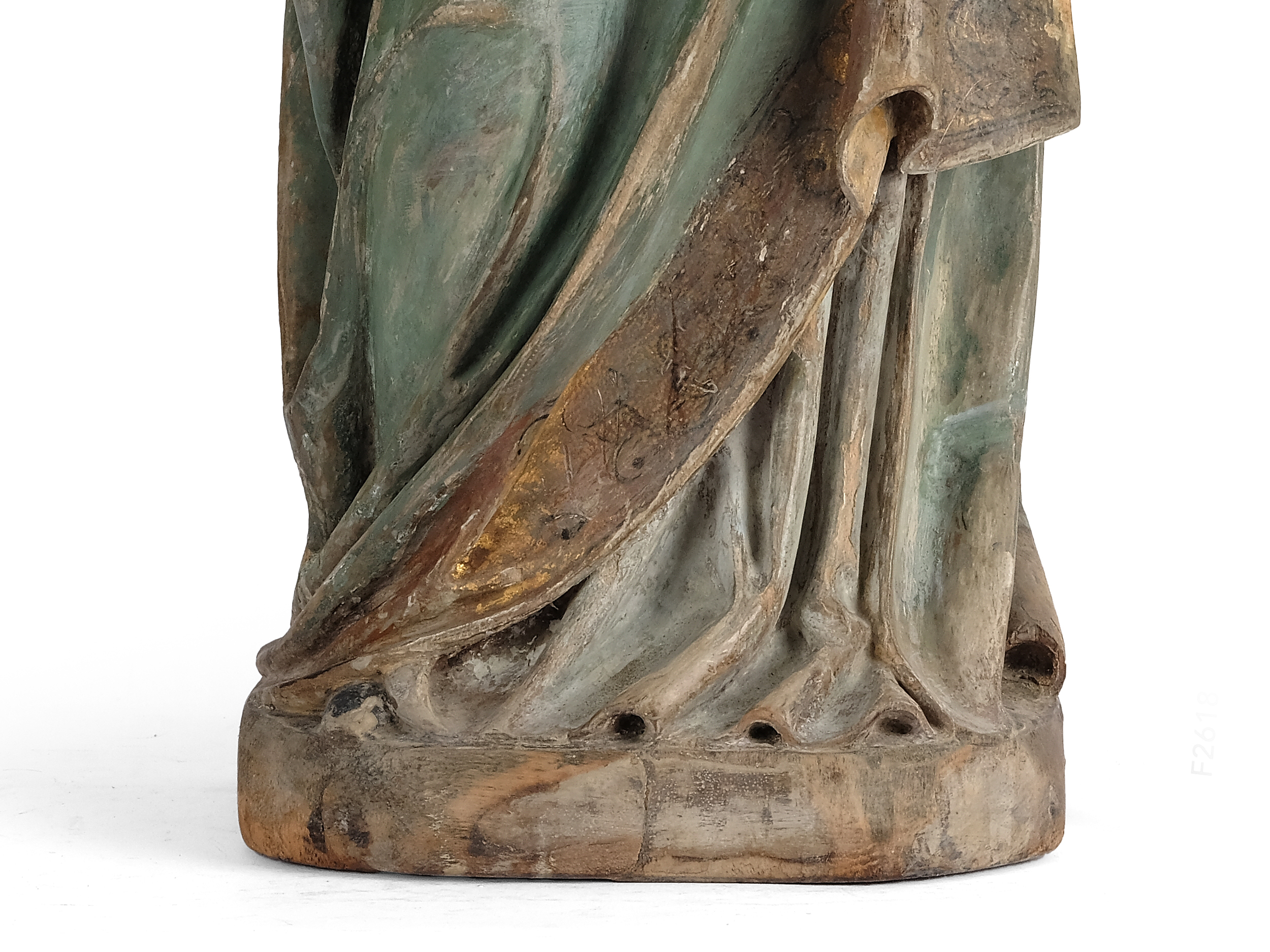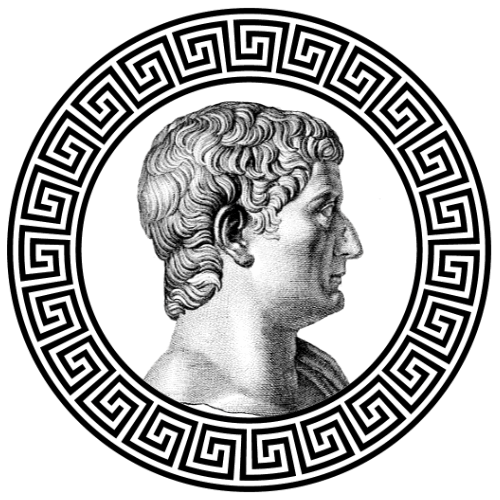Anna instructs Mary
TIBERIUS – NACHVERKAUF
Anna instructs Mary
Aftersale price:
€ 5.080
- USD: 5.969 $
- GBP: 4.459 £
Anna instructs Mary
Early 16th century
Swabian region
Carved lime wood
Height 72 cm
Anna instructing Mary
The theme of Mary’s instruction originated in the 14th century and developed into one of the most popular forms of representation in the late Middle Ages, especially in the Swabian-Franconian region. The focus is on Saint Anne, the mother of Mary, in her role as teacher and guide: she imparts knowledge and faith to her daughter, thus laying the foundation for Mary’s future role as the mother of Jesus. The depiction thus refers not only to the close bond between mother and daughter, but also to the context of salvation history, in which Mary later becomes the bearer of redemption.
Posture & composition
Anne is depicted standing, dressed in a long cloak and a veil pulled over her head, which identifies her as a married woman. With her right hand, she presses Mary, who appears unusually small but already childishly mature, to her breast. Mary wears her long hair loose and has her hands folded devoutly in front of her chest—a gesture that already hints at her future role as the humble mother of Christ. With her left hand raised in a gesture of speech, Anna is characterized as a teaching mother.
Style & Physiognomy (around 1500)
Particularly impressive is the stylistic elaboration of the faces and garments, which is rooted entirely in the formal language of the period around 1500. Anna’s sharp eyebrows, almond-shaped, alert eyes, small pointed nose, and dimpled mouth give the figure a striking presence characteristic of late Gothic imagery. The masterful tubular folds in Mary’s dress beneath Anna’s hand and the striking V-shaped bowl folds at the side also testify to the artist’s high level of carving skill. Finally, small, finely applied folds spread out at the hem of Anna’s robe, lying almost manneristically on the base plate and already revealing a striving for increased elegance. Such details reveal how late Gothic elements were combined with the increasingly playful sense of form of the early Renaissance – very similar to the early works of Daniel Mauch, the important Ulm woodcarver who gained prominence at the beginning of the 16th century for his realistic conception of figures and complex drapery. The figure is therefore comparable to the circle of his workshop, especially in the bulging folds and the clear distinction between close-fitting and more voluminous folds.
The drapery
The design of the drapery is also particularly striking: while the fabric fits closely to the body, the sculptor created a dynamic interplay with complex diagonal folds and the fold curved above the knee, emphasizing Anna’s free leg. This combines a “wet” fabric effect with a lively surface design that lends movement and expression to the scene.
The polychrome version
Anna’s cloak is dark green with gold borders; the inside of the cloak is a contrasting yellow ochre. Her veil and undergarment are white. Mary wears a light red cloak. Green can represent hope and growth, and in Anna’s case also express the educational promise of salvation. Mary’s red can be interpreted in two ways: as the color of love and royal dignity, and at the same time as a foreshadowing of Christ’s passion. The interplay of colors—Anna’s hopeful green with its teaching authority and Mary’s warm red as a sign of the fulfillment of the history of salvation—binds mother and daughter in a clear harmony of meaning that makes piety, teaching, and redemption visible.
The location
Another noteworthy aspect is the hollowed-out back of the figure. This technique not only served to save material and weight, but also prevented the wood from warping too much and cracking. It also refers to the original placement in an altar or niche shrine, where the back was not visible.
Context of piety & popularity
The popularity of the theme is closely linked to contemporary piety: the “Anna Selbdritt” motif and its variants were an expression of veneration that focused on family closeness and religious education. The group of figures depicting Anna and Mary already anticipates the relationship between Mary and Jesus – both in the intimate mother-child motif and in the gestures of instruction and devotion. The sculptor thus not only designed an appealing scene between mother and daughter, but also a preview of the events of salvation history that take shape through Mary and Jesus.
Iconographic classification
Even though this sculpture dispenses with the sacred book image, it incorporates central elements of the iconographic tradition of Mary’s instruction: Anna in a teaching posture, Mary in a devout gesture, and the close physical contact that underlines the educational character of the scene. In essence, it corresponds to the motif widespread since the 14th century, which shows Mary as a religiously educated woman – taught by Anna in virtues and scripture, exemplary both for monastic circles and for lay piety.
Impact
The figure combines heartfelt devotion with masterful carving, making it a unique testimony to late Gothic piety that fascinates collectors and art lovers alike.
Literature
Barbara Maier-Lörcher: Masterpieces of Ulm Art. Jan Thorbecke Verlag, Ostfildern 2004.
Genoveva Nitz, Anna unterweist Maria (Anna instructs Mary), in: Marienlexikon 1, St. Ottilien 1988, p. 160ff.
Dagmar Preising et al. (eds.), Anna Teaches Mary to Read. On the Cult of St. Anne around 1500. The Instruction of Mary from the Peter and Irene Ludwig Collection, exhibition catalog Oberhausen, Bielefeld 2019.
